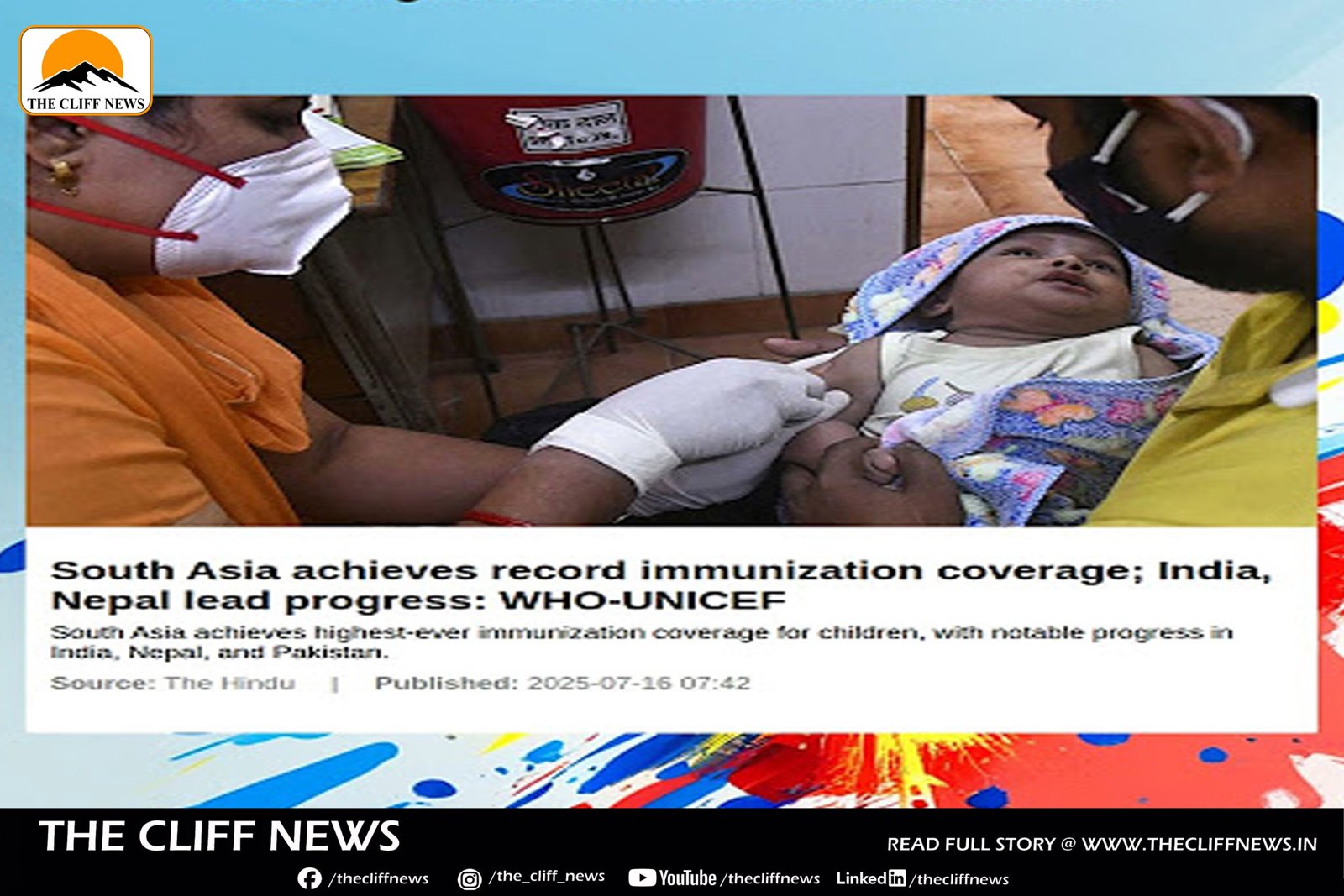South Asia has reached its highest-ever child immunization coverage, with remarkable progress made in India and Nepal, according to new data released jointly by the World Health Organization (WHO) and UNICEF on July 15, 2025, for the calendar year 2024.
India and Nepal Lead the Way
India witnessed a 43% reduction in the number of zero-dose children — those who have not received even a single vaccine — dropping from 1.6 million in 2023 to 0.9 million in 2024. Nepal made even sharper gains, reducing its zero-dose children by 52%, from 23,000 to 11,000, the WHO said.
Pakistan also saw improvement, recording its highest-ever DTP3 (Diphtheria, Tetanus, Pertussis) coverage at 87%. However, Afghanistan remains a concern, with the lowest immunization coverage in the region and a slight decline from last year.
“This is a proud moment for South Asia… But we cannot forget the millions of children who are under-vaccinated or unvaccinated,” said Sanjay Wijesekera, UNICEF Regional Director for South Asia.
DTP and Measles Vaccine Progress
Across South Asia:
- 92% of infants received the third dose of the DTP vaccine in 2024, up from 90% in 2023.
- First-dose DTP coverage rose from 93% to 95%, surpassing pre-pandemic levels.
- Zero-dose children across the region dropped by 27%, from 2.5 million in 2023 to 1.8 million in 2024.
The region also saw major advances in measles control:
- 93% of infants received the first dose of the measles vaccine (up from 90%)
- 88% received the second dose (up from 87%)
- Measles cases dropped 39%, from over 90,000 in 2023 to about 55,000 in 2024
Still, experts warn that measles vaccination coverage must cross 95% to prevent future outbreaks.
Rise in HPV Vaccination
HPV vaccine coverage for adolescent girls rose from 2% in 2023 to 9% in 2024 across South Asia.
- Bangladesh vaccinated over 7.1 million girls since launching its programme in 2023.
- Nepal, which launched its national HPV campaign in February 2025, has already vaccinated 1.4 million girls.
- Bhutan (91% to 94%), Maldives (60% to 75%), and Sri Lanka (31% to 48%) also made notable gains.
- India and Pakistan are expected to roll out their HPV vaccination programmes later in 2025.
Driving the Success
The improvements are credited to:
- Strong political leadership and domestic investments
- Frontline and community health workers, many of whom are women
- Donor and partner support
- Adoption of digital tools, enhanced data systems, and targeted outreach
“We must build on this momentum,” said Dr. Thaksaphon Thamarangsi of WHO South-East Asia Region. “Together we can, and we must.”
Challenges Ahead
Despite the successes, 2.9 million children in South Asia remain un- or under-vaccinated, leaving them vulnerable to preventable diseases.
WHO and UNICEF have called on South Asian governments to:
- Sustain political will and increase domestic funding for immunization
- Expand HPV vaccine coverage
- Reach every zero-dose and under-vaccinated child
- Invest more in frontline health workers and surveillance systems
This historic progress marks a significant milestone for child health in South Asia, as the region emerges stronger from the disruptions caused by the COVID-19 pandemic.



